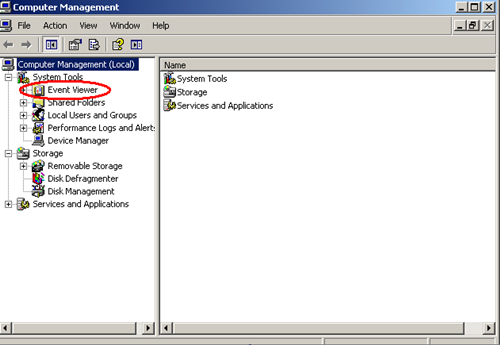Tips When Asking For SharePoint Help
 Guest Author: Mark Rackley The SharePoint Hillbilly
Guest Author: Mark Rackley The SharePoint Hillbilly
One of the cool things about not being a total moron in SharePoint anymore is that I actually have the ability to help people. I’m always happy to lend a hand when I can, and it’s actually a great way for me to learn even more. However, sometimes it can be hard for me to give the proper advice/help because I don’t exactly know what a person is asking.
There are so many different parameters that can affect any advice you get in SharePoint and it’s really hard for someone to be in your head. Sometimes it can take several back and forth emails just to fully understand the question being asked. So, I thought I’d type up a quick blog which will help you ask your questions more succinctly and make sure you get the best advice/help possible (not necessarily from me).
What Version of SharePoint Do You Have?
The version of SharePoint you are using can greatly affect your options for solutions. Are you using WSS 3.0? MOSS 2007 Standard? MOSS 2007 Enterprise? Yeah, I know there is this thing called SharePoint 2003 and I’ve heard rumors of SharePoint 2010. You get the idea though, what are you using?
What Development Limitations Do You Have?
So, if your solution is going to require any sort of development, what kind of development constraints do you have? Are you allowed to use SharePoint Designer on your farms? What about SPD Workflows? Do you have to write custom code for everything? Is custom code even allowed on your farms? What about 3rd party web parts? I know that we traditionally do not like to use free third party web parts because we don’t necessarily know what they are doing under the covers, do you have those limitations well?
If you don’t have any structural development limitations, what are your skill limitations? Are you comfortable writing custom web parts or workflows? If you are asking a SharePoint Dev MVP a dev question, there’s a good chance they may ask you to crack open Visual Studio. Are you willing and able?
Get Your Terminology Down!
This is a BIGGIE and one I still struggle with. Remember when a Web Application was just an “application”? Try to use correct SharePoint terminology when possible. Especially when it comes to web applications, site collections or sub sites. It’s amazing how things will “click” when you are both using the same terminology. If I ever get it all down, I’ll be sure to let you know.
Along the same lines, I get a lot of questions asking for how to “search” for data. Well, what do you mean by search? Are you talking about setting up a search scope in SharePoint or just filtering data in a list? And while we’re on it, what “data” are you talking about? Is it SP List data? data in an external database? What kind of database? Be as specific as possible when asking your questions!
Richard Harbridge (@rharbridge) has an AWESOME blog post explaining SharePoint Terminology. Be sure to check it out. He may even be expanding on it, so keep an eye out for that.
For General “How To” Questions
So, a lot of the questions I get are “Hey.. that’s great, but how do you…?” Unfortunately, the question usually has nothing to do with the blog where the question was posted. It generally translates into “Hey, that’s great. I always wondered why the sky was blue, but how do you increase the fuel efficiency in my 65 Buick Riviera?” If you are posting a question on a blog, you are much more likely to get a response if it is directly related to the blog on which said question was posted. :)
Also, when asking “How To” type questions I personally find it very helpful to get some use cases for what you are describing. Give detailed steps for what you would like a user to see and do on the screen. “I would like a text box where a user will enter a date and press a button. When the button is pressed the user will see…”. I can’t be in your brain, I don’t see what you are seeing. Help me to understand how this will be used in the real world.
For Help Fixing Issues
So, I would gather a vast majority of the questions out there revolve around issues/errors people are having with SharePoint. After all, the error messages are SO helpful, you basically don’t need anything else? right?
Well, if you are having problems with an actual error or something not working right, here are a couple of things to make it SO much easier for whoever is helping you.
What are the steps to reproduce the problem?
Walk someone step by step through what you are doing. Having a problem creating a web application in Central Admin? Walk me through EXACTLY the steps you are taking, what check boxes you are checking, what text are you entering. Don’t skip anything! Imagine how frustrating it would be for someone trying to help you when the whole problem turned out to be you checked a check box you should not have checked, but you never told them about it! YOU are the one with the problem, so obviously you probably don’t know what is and is not important. Too much information is always more helpful than not enough.
Do you have any Pretty Pictures?
Screen shots and example code are fabulous to help people understand what you are doing. Yes, I used the word fabulous.. there’s nothing wrong with that.
Did you check the logs?
Are there any error messages in your 12 Hive logs or Event Viewer? Actually, if you check here first you may find your problem and not need to ask for help. But definitely check here for any helpful information and provide that information to whoever is helping you. IF there is a helpful error message they are usually found here.
The 12 Hive logs can be found at: C:\Program Files\Common Files\Microsoft Shared\web server extensions\12\Logs
To get to the event viewer go to Control Panel->Administrative Tools->Computer Management and then expand the “Event Viewer”

Be Patient!
Above all, please be patient. Everything I (and many others) do for the community is in my spare time and I have a full time job and a family. I may not get to you right away and I might need you to send me a reminder email or 4. So, please be patient, and feel free to follow-up if you have not heard something.
So! there you go! I may be just speaking for myself, but if you follow the guidance above it will make helping you SO much easier. Thanks again for stopping by and please feel free to leave some comments and ask some questions. :)
 Guest Author: Mark Rackley
Guest Author: Mark Rackley
Mark has been developing software applications for over 15 years filling the roles of Project Manager, Business Analyst, Lead Developer, and Software Architect. He has been involved in projects for such companies as Dell, Motorola, Intel and Agilent Technologies. He has worked in large corporate environments, small software start-ups, and as a consultant. Mark currently works for UNFI where he was introduced to the world of SharePoint and has taken on a lead SharePoint architect role within his organization making key development, administration, and architecture decisions. Mark’s goal is to help ever new architect and developer avoid the frustrations and brick walls he ran into while learning SharePoint.
Blog: http://www.sharepointhillbilly.com
Email: [email protected]
Twitter: http://www.twitter.com/mrackley
- SharePoint Date Filter: Filtering a List by Greater Than or Equal to Date
- Creating a SharePoint List Parent / Child Relationship - Out of the Box
- Passing Multiple Query String Variables Using SPD – Follow Up on Creating Parent / Child List Relationships
- Setting SharePoint Form Fields Using JavaScript
- Tips When Asking For SharePoint Help
- Setting SharePoint Form Fields Using Query String Variables Without Using JavaScript
- Creating a SharePoint List Parent/Child Relationship – VIDEO REMIX
- SharePoint: Populating Drop Down List Field with Data from Different Site
- Building The Right SharePoint Team For Your Organization












 on
on
Mark –
Good summary. I work with web applications and find that framing up the question of what is REALLY being asked is often the most difficult task.
Thanks for providing some help. I may point people to this article when they ask me questions.
I’m please to have stumbled onto your post. I am mentoring end users to save them the time and hassles I had whilst learning SharePoint too. In my personal education, I have found it near impossible to take it to the next level to learn the technical and advanced functionality of SharePoint without a mentor. I can’t find anyone who has the time or who speaks in a language I can understand. I am following your blogs from right now and am planning on asking you the questions I am too shy to ask anyone I know. Thanks Mark, you’re my ray of light.
You mean you CAN’T tell me how to increase my gas mileage? Drat…
And here I thought SharePoint could do everything!
Lol Sabrina – you’d have to go to SharePINT for that! ;-)
Is there a way to install SharePoint as a trial for free? I am running Windows 7 Pro 32-bit.
Thanks.
Dear Mark,
We created a calendar on sharepoint and we would like to show by using a web part the entries with starting date occurring during the 7 days. We crated a column in the calendar custom list called current week, calculating on the formula area with this formula:
=IF(AND(IF([Start Date]-Today-1,(IF([Start Date]-Today<0,-5,DATEDIF(Today,[Start Date],"D")))<7),"Yes","No")
It works but does not refresh or loop, therefore, we need to refresh the data manually once previously entered. Would you have a better formula to calculate events occurring during the current week? and not showing it on the webpart when end date expires (because we do have events with start date during the week and end date could be in a month – therefore we need to show them as long as the end date is not over).
If, not, would you have any other suggestion on how to go about it?
Thanks a lot!
@Mari:
[Today] cannot be used in a calculated column– it won’t refresh, as you know. You can only use it in a filter.
YOu’re better off posting this question in Stump the Panel